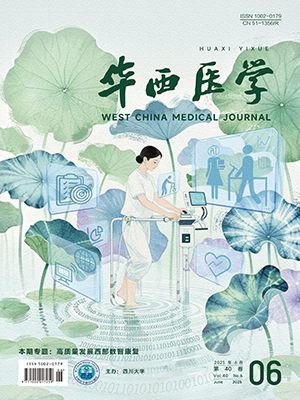【摘要】 目的 探讨双源CT在诊断肺栓塞中的价值。 方法 2008年5月-2010年12月纳入50例可疑肺栓塞患者,使用双源CT进行肺动脉血管增强扫描,对图像行三维重建,分析栓塞部位、栓子形态、肺内、心脏及胸腔改变等。 结果 44例确诊肺栓塞,发现肺栓塞共260处,最常见于右肺下叶动脉28例(63.0%),其次于右肺动脉22例(50.0%)、左肺下叶动脉19例(43.2%);15例(34.1%)累及亚段肺动脉;右肺动脉受累较左肺动脉常见(P lt;0.05)。39例系急性肺栓塞(88.6%),5例系慢性肺栓塞(11.4%)。 结论 双源CT扫描速度快,空间分辨率高,可以准确显示肺栓塞部位,并且可以同时评价胸腔、肺内及心脏的变化。在临床上,双源CT可以作为肺栓塞的首选检查。
【Abstract】 Objective To explore the value of dual-source CT in diagnosing pulmonary embolism. Methods From May 2008 to December 2010, 50 patients who were suspected of pulmonary embolism were included, and pulmonary angiography was performed on these patients by dual-source CT. The obtained images were reconstructed with three dimensional technique to analyze the location and shape of the embolism, and lesions affecting the lung, heart and thoracic cavity. Results A total of 44 patients wiht pulmonary embolism with 260 affected branches of arteries were confirmed by CT angiography. The most common affecting artery was the right lower pulmonary artery(28/44,63.0%), which was followed by the right pulmonary artery (22/44,50.0%) and the left lower pulmonary artery(19/44,43.2%). Segmental and subsegmental pulmonary arteries were involved in 15 patients (15/44, 34.1%). Pulmonary artery embolism involves the right pulmonary arteries more frequently than the left pulmonary arteries (P<0.05).Acute pulmonary embolism was found in 39 cases(39/44, 88.6%), while chronic pulmonary embolism was found in 5(5/44, 11.4%). Conclusions Dual-source CT with fast scanning speed and high spatial resolution can demonstrate the exact site of the pulmonary embolism and evaluate the lesions of thoracic cavity, lung and heart. In clinical practice, dual-source CT could be the preferred choice in diagnosing pulmonary embolism.
Citation: SHI Bingyan,WU Dan,PENG Liqing,HUNAG Yunfeng,XIAN Dengqin. Value of Dual-soure CT in Diagnosing Pulmonary Artery Embolism. West China Medical Journal, 2011, 26(7): 1068-1071. doi: Copy
Copyright © the editorial department of West China Medical Journal of West China Medical Publisher. All rights reserved




